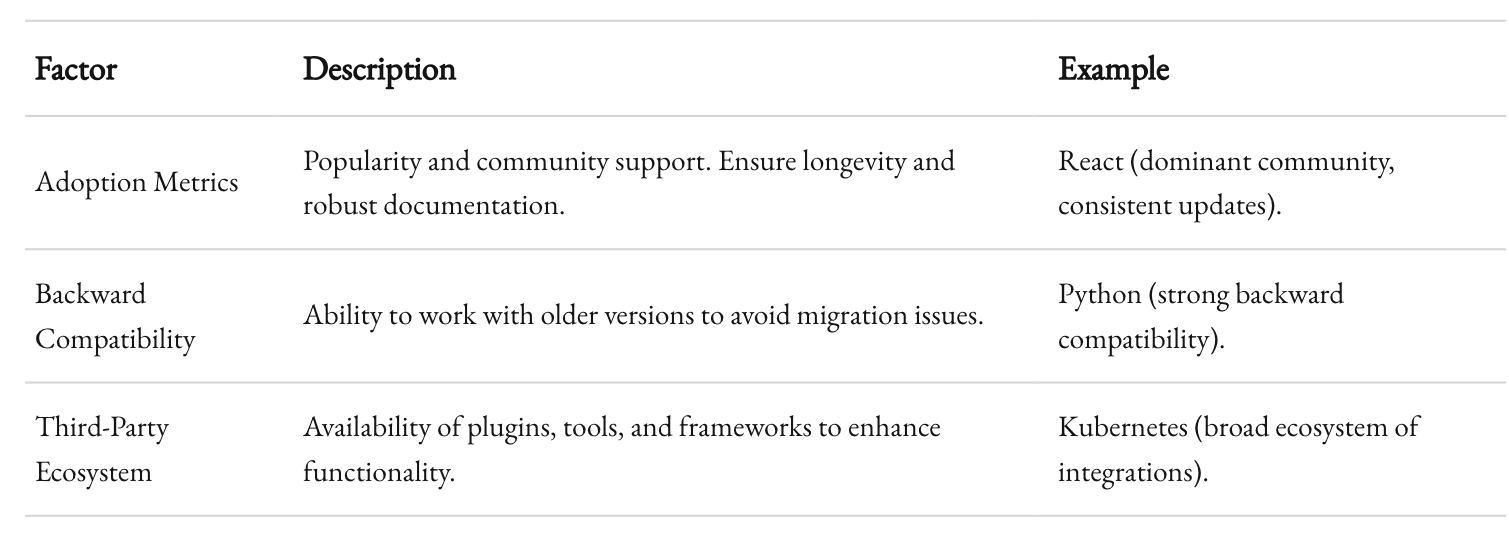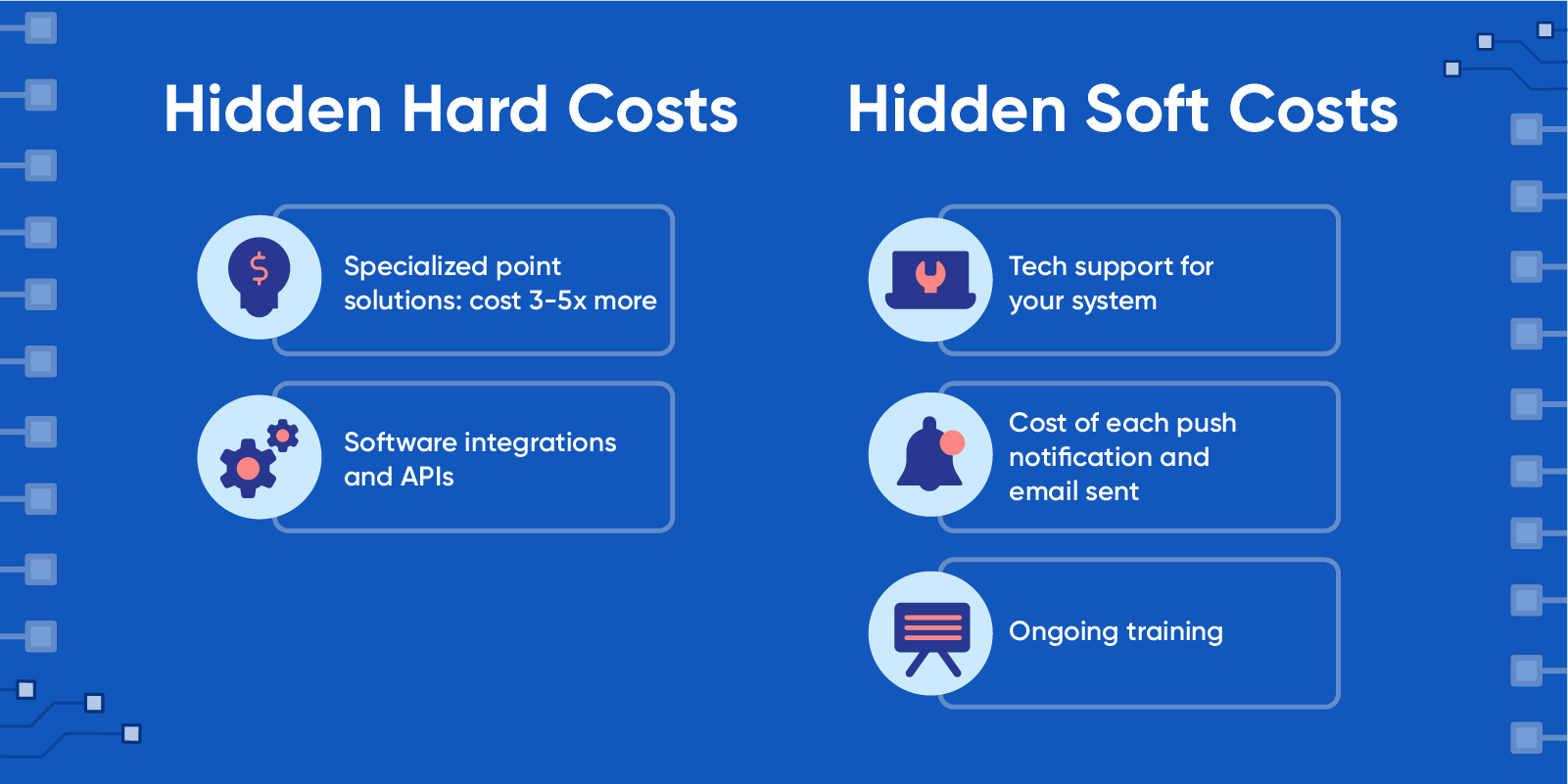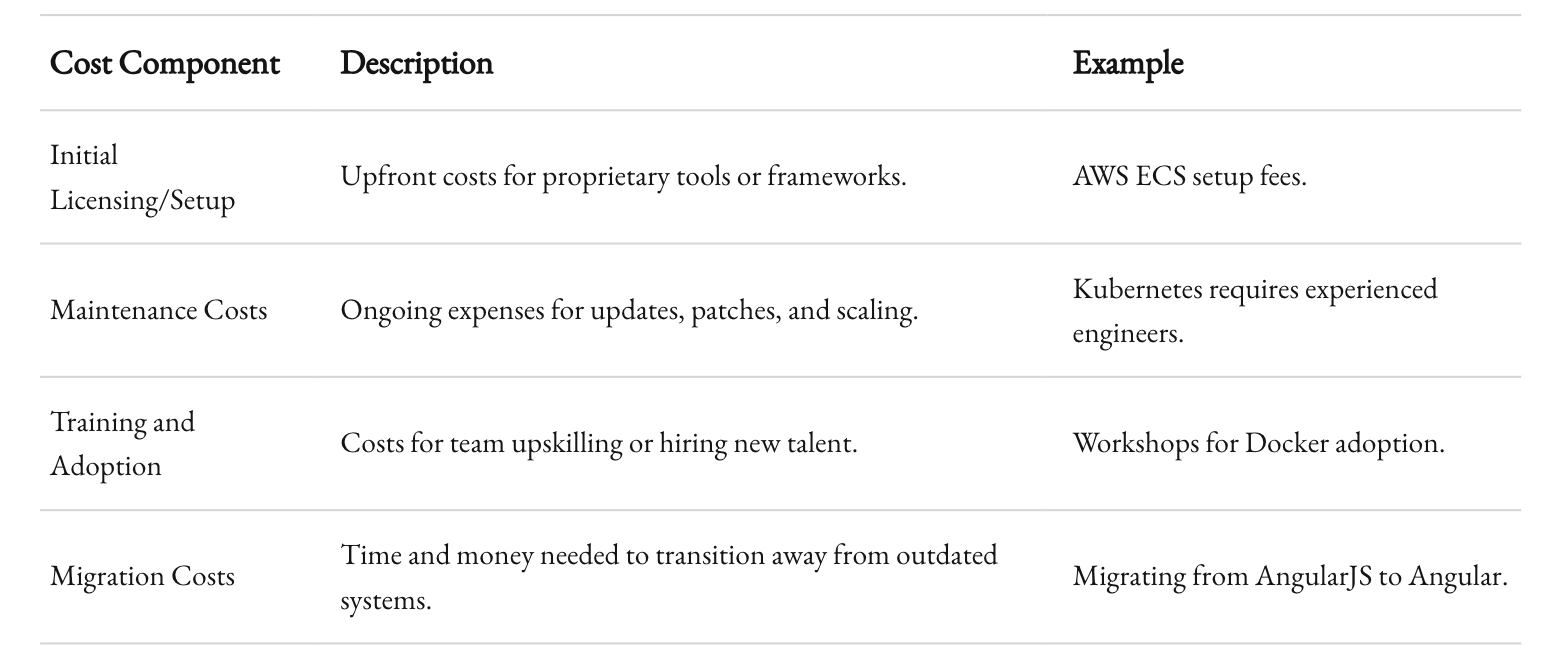How Can We Future-Proof Our Tech Stack Choices?
Learn how to stay ahead of tech trends while keeping your stack adaptable and cost-effective.

Let’s be honest. Making the right tech stack choices feels a bit like trying to predict the weather a year in advance. Today’s shiny, groundbreaking tool could become tomorrow’s legacy liability.
I’ve seen it firsthand. At 1985, where we help companies build scalable software solutions, I’ve learned that the tech decisions you make today can either set you up for sustainable success or leave you tangled in a web of technical debt. The stakes are high. Yet, with a bit of foresight and strategy, you can stack the odds in your favor.
Here’s how to think about future-proofing your tech stack without losing sleep over every new tool that hits the market.
Think Long-Term, Not Trendy
Tech trends are seductive. Everyone’s talking about the latest JavaScript framework or the cloud service that promises to revolutionize DevOps. But hopping on every new bandwagon is a recipe for disaster.

Instead, ask yourself: What’s the staying power of this technology? Here’s what we’ve learned:
- Adoption Metrics Matter: Look at GitHub stars, developer community sizes, and enterprise adoption rates. A framework like React remains dominant because it’s backed by Facebook and has robust community support. Compare that with Svelte—exciting, but riskier if you’re building for the long haul.
- Backward Compatibility: Will this tool play nice with future versions? Technologies with solid backward compatibility—like Python—reduce migration headaches. Think about the headache caused by AngularJS vs. Angular 2 migration.
- Third-Party Ecosystem: Tools with a mature ecosystem save time and money. Consider Kubernetes. It’s not just a container orchestration tool; it’s the centerpiece of a vast ecosystem that supports monitoring, CI/CD, and security tools.

Invest in Developer Happiness
Developers don’t want magic. They want tools that make their jobs easier. If your tech stack frustrates your team, you’re in trouble. Happy developers ship faster, write better code, and stay longer. So how do you keep them happy?

Choose Familiar Languages
While learning a new language or tool is exciting, sticking with familiar options often yields better productivity. For instance, JavaScript frameworks like Vue.js or React build on JavaScript—a language most developers already know. Compare that with introducing Haskell or Erlang. Great languages, but your team might balk at the steep learning curve.
Prioritize DX (Developer Experience)
Tools like Vercel and Netlify have gained traction not just for their performance, but because they drastically improve DX. Setup times shrink, deployments are seamless, and the documentation is delightful. When comparing tools, weigh the ease of onboarding and the quality of developer tools just as heavily as performance metrics.
Enable Flexibility
Microservices are a hot topic, but they’re not always the right answer. A monolithic architecture might suit a small team better. If you’re going microservices, ensure you’ve got tools like Docker and Kubernetes that simplify the process, not make it more painful.

Build for Scalability Without Overengineering
We’ve all seen it—startups overbuilding their architecture for a scale they might never reach. Or worse, companies cobbling together quick fixes until their app collapses under real-world demand.
Plan for Realistic Growth
Understand your business trajectory. If you’re building an MVP, simplicity trumps sophistication. Use a lightweight stack like Node.js with Express. But if you’re planning for rapid growth, frameworks like Django or Spring Boot offer built-in scalability.

Use Proven Cloud Providers
AWS, Azure, and Google Cloud are reliable choices. They’re not just about hosting. They offer autoscaling, managed databases, and tools like AWS Lambda for serverless computing. These features save time and reduce infrastructure headaches.
Monitor Early and Often
Scalability isn’t just about handling traffic spikes. It’s about identifying bottlenecks early. Tools like New Relic and Datadog provide visibility into system performance, helping you optimize before small issues balloon into major outages.

Keep an Eye on Total Cost of Ownership (TCO)
The upfront cost of a tool is just the tip of the iceberg. Maintenance, training, and migration costs pile up over time. To future-proof, you need to think holistically about TCO.

Open Source vs. Proprietary
Open source tools often seem like the cheaper option. But beware of hidden costs like limited support or the need for in-house expertise. Kubernetes is free, but managing it requires skilled engineers. Proprietary tools like AWS ECS might cost more upfront but save on operational complexity.
Avoid Vendor Lock-In
No one likes feeling trapped. A multi-cloud strategy reduces dependence on a single provider. For databases, consider tools like CockroachDB or Yugabyte, which offer cloud-agnostic functionality.
Budget for Training
Adopting a new stack often means retraining your team. Allocate time and money for workshops, certifications, or bringing in external experts.

Focus on Security and Compliance
Security isn’t optional. One breach can destroy customer trust and sink your reputation. Building security into your tech stack from day one isn’t just smart—it’s essential.
Embrace DevSecOps
Integrate security into your development pipeline. Tools like Snyk and OWASP Dependency-Check scan for vulnerabilities in your code and dependencies. Automation here isn’t just a nice-to-have; it’s non-negotiable.
Stay Compliant
If you’re operating in regulated industries, your stack needs to support compliance requirements. Healthcare? Ensure HIPAA compliance. Handling European customer data? GDPR is non-negotiable. Tools like AWS Artifact provide pre-built compliance reports, saving you the grunt work.

Regularly Audit and Refactor
No stack stays perfect forever. Regular audits ensure you’re not clinging to outdated tools that drag your team down.
Perform Codebase Audits
Use tools like SonarQube or Code Climate to measure code quality. Identify tech debt and prioritize fixing it. A clean codebase is easier to adapt as your needs evolve.
Retire Legacy Systems
Yes, it’s painful. But clinging to legacy tech is riskier. Plan migrations in phases, focusing on high-priority systems first. Tools like Strangler Fig can help you transition gradually, reducing disruption.
Measure Impact
Every quarter, measure whether your stack is delivering ROI. Are deployment times faster? Are bug reports down? Use KPIs to guide decisions, not gut feelings.

Build a Culture of Adaptability
The final piece of future-proofing isn’t technical. It’s cultural. Even the best stack won’t save a team that’s resistant to change.
Encourage Experimentation
Give your team room to experiment with new tools. Hackathons, proof-of-concept projects, or dedicated R&D sprints help identify valuable technologies without risking production systems.
Embrace Lifelong Learning
Tech evolves daily. Invest in ongoing training, conferences, and certifications. Platforms like Pluralsight or Coursera make it easy to upskill at scale.
Celebrate Wins
When your team successfully implements a future-proofed solution, celebrate it. Recognize the effort and reward the mindset. It’s the best way to encourage more of the same.
Future-Proofing is a Mindset
Future-proofing your tech stack isn’t about picking the perfect tools. It’s about building a resilient foundation and staying nimble. It’s about prioritizing scalability, security, and developer experience over shiny new toys. And above all, it’s about fostering a culture that’s ready to adapt as technology evolves.
At 1985, we’ve helped countless businesses navigate these challenges. The tools may change, but the principles don’t. Choose wisely, iterate often, and keep one eye on the future. The rest will take care of itself.



